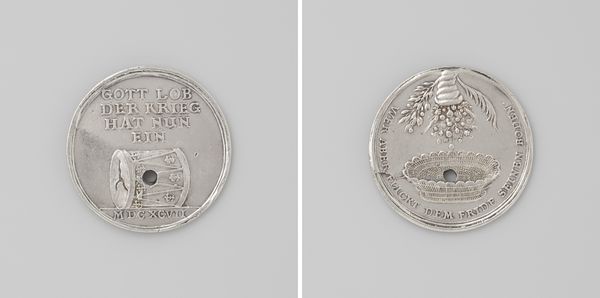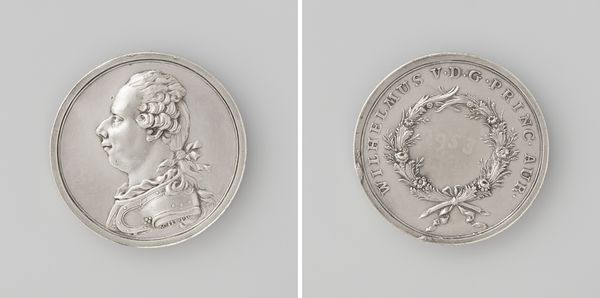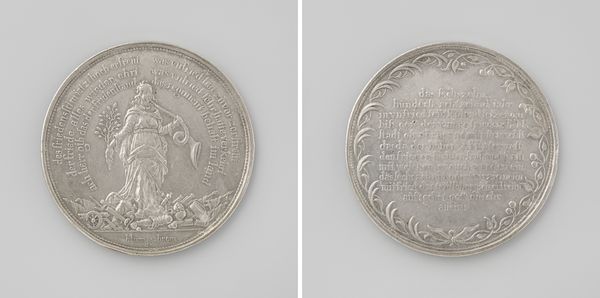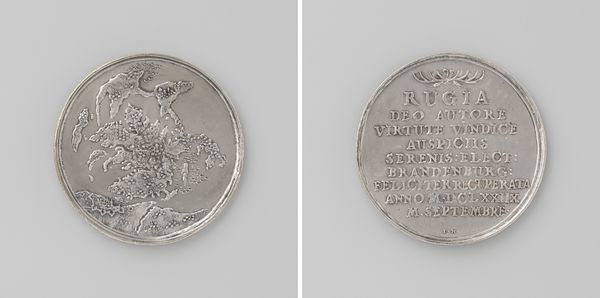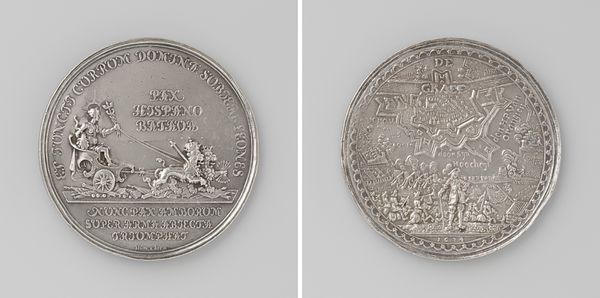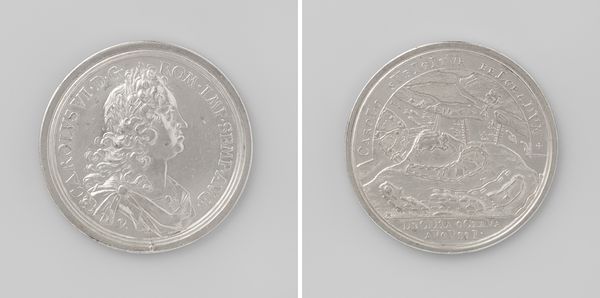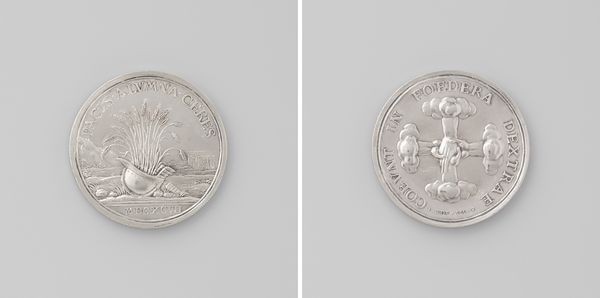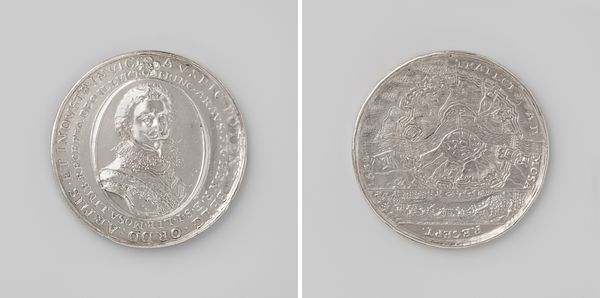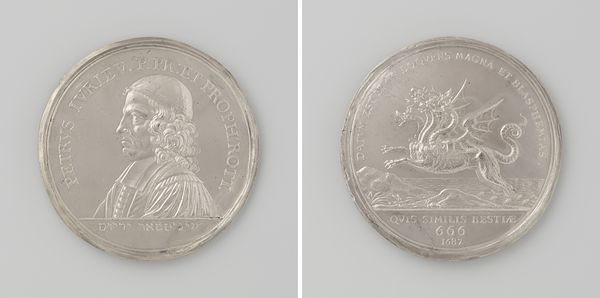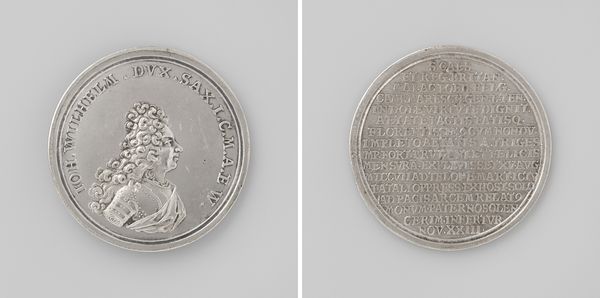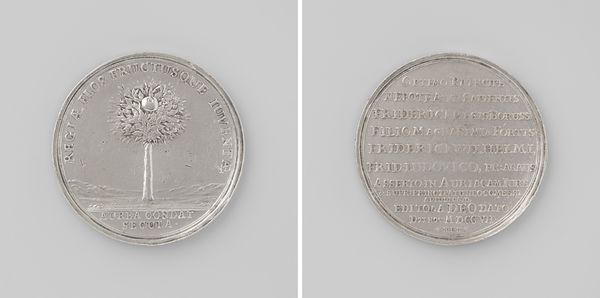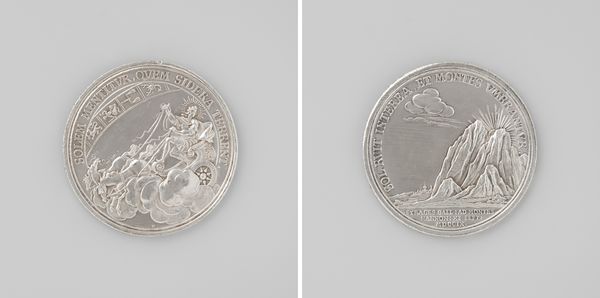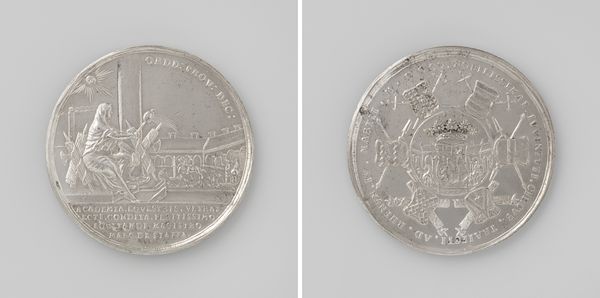
Geboorte van Frederik Willem, prins van Oranje, zoon van kroonprins Frederik Willem en Sophia Dorothea van Braunschweig 1710
metal, relief, sculpture
portrait
baroque
metal
relief
sculpture
ceramic
history-painting
Dimensions: diameter 4.5 cm, weight 30.34 gr
Copyright: Rijks Museum: Open Domain
Curator: Look at this fascinating object! We have here a commemorative metal relief from 1710, crafted by Georg Hautsch. The piece is titled "Geboorte van Frederik Willem, prins van Oranje, zoon van kroonprins Frederik Willem en Sophia Dorothea van Braunschweig" – quite a mouthful, isn’t it? Editor: Oh, my goodness, it's beautiful! It’s almost like holding a little piece of history. I’m immediately struck by the coolness of the metal, how it reflects the light and almost gives the piece a subtle shimmer. It looks very official! Curator: Yes, it’s very much tied to the Baroque style and the specific political and dynastic contexts of the time. These types of objects were used as vehicles to promote particular narratives about power and legitimacy. In this case, it concerns the birth of a royal heir. Editor: A little shiny propaganda, perhaps? The imagery is curious though; the tree looks so…centered. Almost stoic under those eagle-like creatures up top. Reminds me of the family trees from my grandmother's books. Curator: The central image on one side features a tree, representing the House of Orange, growing from the landscape. The eagles, symbolizing strength and empire, are topped with a crown representing, of course, royal authority. Consider the importance of lineage and succession in maintaining power at the time. The imagery ties directly to prevailing notions of inherited rule and divine right. Editor: Absolutely. And turning it over, it's like looking at an astrolabe of hopes and futures! That web of lines and symbols… I find myself trying to imagine what the world was like then, the anticipation tied to the new baby's future role, perhaps. Curator: That diagram is quite significant; it represents astrological charts predicting the Prince's auspicious future based on celestial alignments. This points to the beliefs held regarding the influence of the cosmos on individual destinies, and the importance that was assigned to such predictions in royal and noble circles. It’s like an early form of media used to manage the perceptions of royal power. Editor: Wow, to think that people put so much stock into what the stars whispered. Looking at this piece I feel connected to the past— almost as though it’s not a frozen moment, but rather a piece of hope carried down through the ages. Curator: Yes, it highlights a moment framed by ambition and historical circumstances and how cultural artifacts become charged with layers of meaning that evolve through generations. It’s a powerful lens through which to study the interplay between identity, power and historical narrative. Editor: Well, I’m left with a strange, but compelling notion: history is but a well-crafted dream etched in metal and spun by the stars.
Comments
No comments
Be the first to comment and join the conversation on the ultimate creative platform.
